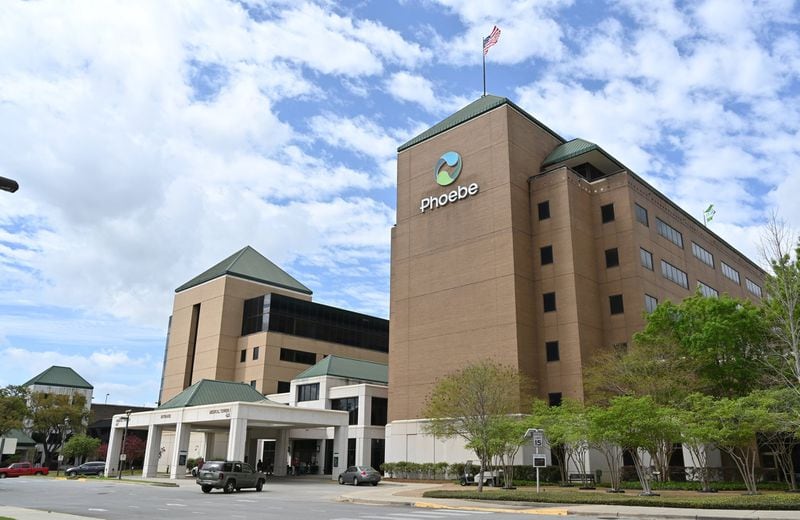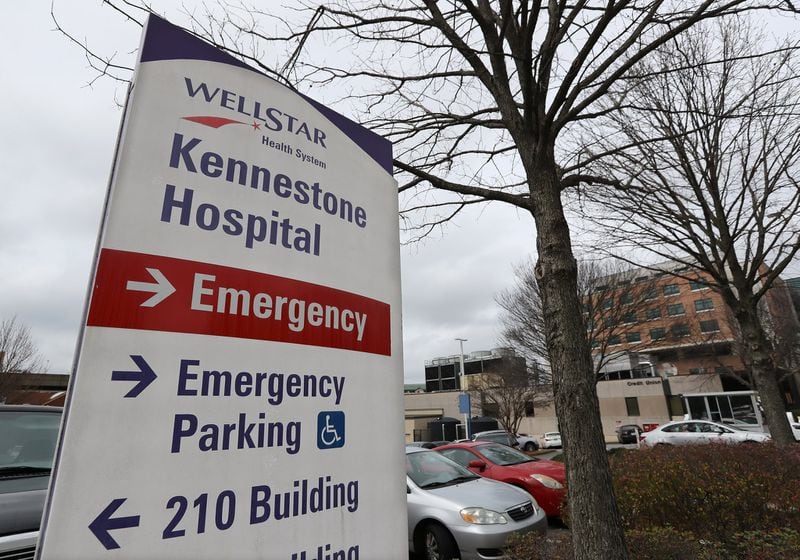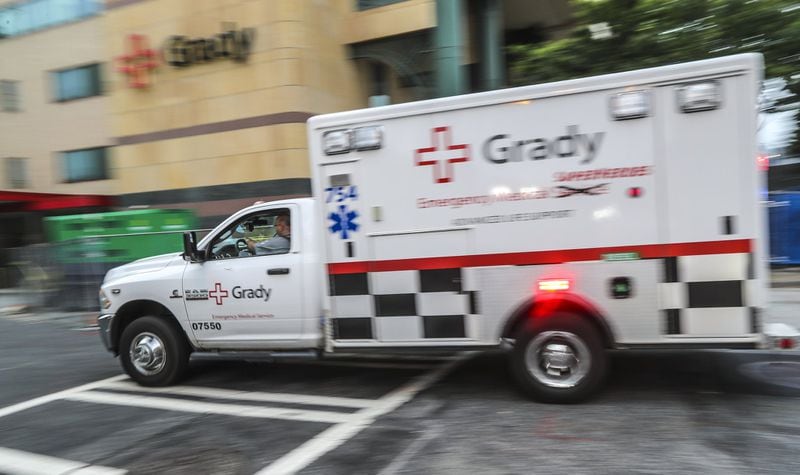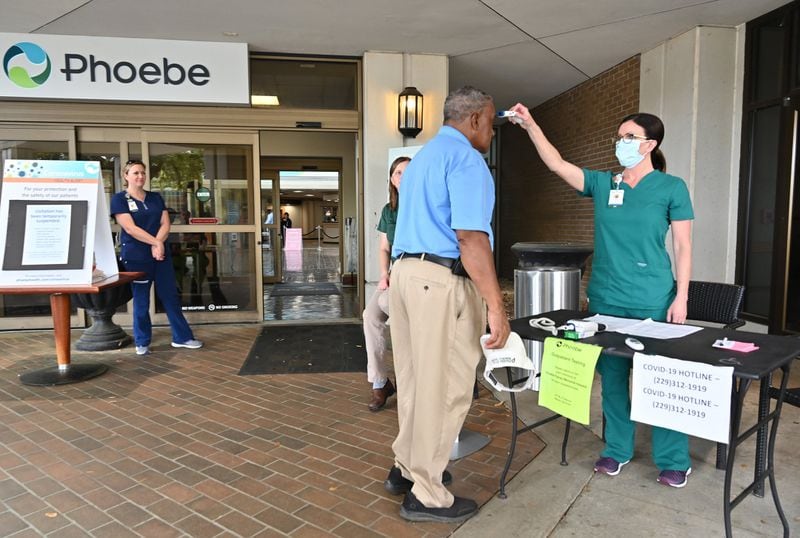When the hardest hit area of the state confronted the worst of the pandemic, its biggest hospital got into the daycare business.
Doctors, nurses and other front line workers at Phoebe Putney Memorial Hospital in Albany were marooned at home because the shutdown of schools and day cares left no one to care for their children. The hospital responded by assigning employees to convert a health center into a kids camp. Administrative workers became camp counselors.
A pandemic can push hospitals to solve problems they never faced before.
» CONTINUING COVERAGE: Coronavirus in Georgia
» THE LATEST: How hospitals are dealing with COVID-19
“We need to be flexible. We need to do the right things. We need to take care of our people,” said Phoebe Putney Health System CEO Scott Steiner. “That nurse with a 3-year-old, how do we take care of her?”
In the months since COVID-19 arrived in Georgia, hospital administrators have learned that having enough capacity is about far more than hospital beds. Manpower shortages because of illness, quarantine and child care issues can cripple a hospital. Basic supplies such as masks, gowns or testing supplies can vanish or skyrocket in price as hospitals compete against each other for them.
With few national policy solutions or vaccine in sight, how quickly hospitals can adapt and respond to another surge in coronavirus infections will be a matter of life or death for the sickest patients. While Georgia’s coronavirus cases are trending flat, a fifth of U.S. states is experiencing a surge, including four of the five states bordering the Peach State.
Georgia’s hospitals learned much from the first wave of cases, but unknowns remain in the ever-shifting landscape of the pandemic.
Many hospitals are now confronting projected financial shortfalls caused when they cut routine services and elective surgeries to clear up resources for the pandemic. Federal relief payments don’t cover all their losses, hospitals say.
Wellstar Health System, which is projected by Georgia Tech researchers to face the state’s biggest regional shortage by far of hospital beds, recently furloughed 1,070 workers to offset what it expects to be hundreds of millions of dollars in deficits.
» RELATED: Nurse by her side, patient makes miraculous recovery from COVID-19
» NEW DASHBOARD: The AJC’s redesigned page of real-time charts tracking the virus
Child care remains tenuous as summer camps stay closed and day cares limit their slots to reduce infection risks. A reduction in Atlanta bus routes can make commuting difficult. These and other problems show an uncertain future for hospitals as the pandemic wears on.
"This is a marathon. This race is not over by any means," said Dr. Eric Toner, a top expert in hospital surge capacity and a senior scholar at the Johns Hopkins Center of Heath Security. "So far, the best estimate is that 3% of the U.S. population has been affected so far. Which means 97% of us are still susceptible."
Capacity struggles
Administrators for area hospital systems say they are prepared to add capacity. They started a daily phone call between hospital system leaders to stay up-to-date on regional trends.
Yet even among top experts, determining how many beds, supplies and personnel a hospital requires to meet a surge in need is “virtually impossible,” Toner said. When hospitals try, they tend to underestimate the need, he said.
Current data shows that hospitals statewide are at 72% capacity of critical care beds, Georgia Emergency Management & Homeland Security figures state, which some experts believe give Georgia little room for error. Hospital bed usage appears to be leveling off after several weeks of declines.
"This is a marathon. This race is not over by any means." —Dr. Eric Toner, a top expert in hospital surge capacity
Covidexitstrategy.org, which tracks trends nationwide by state, recently rated Georgia as having "low availability" of free ICU beds. Its estimate of the percentage of beds in use, however, is higher than than GEMA's.
In Cobb, Douglas and Paulding counties, where Wellstar Kennestone is regional coordinating hospital, the ICU beds needed for COVID patients may peak at nearly 400, or about three times the number of available beds, according to a Georgia Tech projection reviewed by state Department of Health officials.
This scenario is likely if Georgians show moderate compliance with voluntary quarantine practices, which require that all household members stay home if one of them exhibits cold- or flu-like symptoms.
The three-county area of Cobb, Douglas and Paulding has low bed availability for its population, noted Pinar Keskinocak, a researcher on the team that created the projection.
“We have a higher risk of infection in a high density, high population area, and the capacity is not measuring up at the moment,” Keskinocak said.
In Georgia, more rural, lower density counties have also experienced high rates of infection.
Problems from the early weeks of the virus may hint at what's to come. At one point, hospitals in Cobb had fewer than 50 ventilators on hand and no open intensive care beds, Dr. Janet Memark, director of Cobb and Douglas Public Health, told Cobb County commissioners in March.
The hospital responded by using other beds to more than double its official ICU capacity, Dr. Chirag Patel, medical director of population health, wrote in response to questions from the AJC. Wellstar officials denied multiple requests for a telephone interview with administrators.
Wellstar will manage any potential surge by moving around staff, deploying contract workers and activating those on furlough.
“Should an increase in COVID-19 patients occur, Wellstar is prepared to manage these cases as well as all other healthcare needs,” the email said.
» FROM MARCH: As virus spreads, a growing fear of overwhelmed Georgia hospitals
» MORE: Piedmont Hospital opening new tower early for coronavirus
Piedmont Healthcare, which has 11 hospitals across the state, stood up a new tower ahead of schedule during the early weeks of the pandemic and never ran out of staff, said Chief Medical Officer Dr. Leigh Hamby. It has plans in place to manage three times the ICU patient load that it had during the disease's early peak.
The Piedmont system closed down elective procedures March 16 to conserve personal protective equipment and diverted staff to other duties. Volunteers sewed cloth masks for staff who do not enter areas with COVID-19 patients to reserve higher-filtration masks for those who are exposed to them. Now it has improved screening procedures for visitors and staff to head off the spread of the disease.
Still, the availability of supplies remains difficult to predict. Gown supplies have dried up. Sometimes masks arrive in the wrong size.
“If we knew for a fact there would be a shortage to certain degree for sure, it would be a lot easier to know what we’re going to do,” Hamby said.
Grady came close to running out of supplies, but never did, said Dr. Robert Jansen, Chief Medical Officer of Grady Health System. It maintained its capacity to treat trauma, burn and stroke patients, he said. No furloughs are planned, and its leadership is digging in to manage COVID-19 for the long term. All staff can now get tested for the disease if they wish, he said, and all of them are required to wear masks.
“We’re accustomed to dealing with crisis as regional trauma center. But this infection is going to be in the community for at least the near future until an effective vaccine is deployed,” Jansen said.
Fewer options
Experts warn that the strategies hospitals used to handle the early phases of the pandemic may no longer be an option in the coming weeks. Hospitals that cancelled routine services and elective surgeries to free up resources for COVID-19 patients will be unable hold off on them any longer.
“These are not cosmetic procedures,” Toner said. “These are cancer surgeries and heart surgeries.”
The decline in shootings and car accidents that eased demand for hospital services and supplies earlier in the pandemic may not help them, either. Shootings injuries have returned to prior levels at Grady Memorial Hospital, the city’s oldest Level I trauma center, said Jansen.
These scenarios make the strategy of stockpiling equipment even more important. A GEMA spokeswoman did not respond to questions asking for details on how it will manage and distribute emergency supplies. The Federal Emergency Management Agency is responsible for coordinating a national stockpile of equipment, but Toner said he has not heard of any strategy being released to the public on how it will be distributed.
No government agency is responsible for tracking supply or manufacturing capacity of personal protective equipment, and manufacturers are not required to report the information, according to a May 5 report from Johns Hopkins Center for Health Security, of which Toner was lead author.
At Phoebe Putney, when supplies of protective shields ran low, staff scattered across southwest Georgia and north Florida to buy 2,000 pairs of safety goggles.
“You got to go to Thomasville. You got to go to Tallahassee. You just do what you have to do,” Steiner said.
Full protections for hospital staff will likely remain out of reach in the near future, warned Dr. Joanna Newton, a Children’s Healthcare of Atlanta pediatric oncologist and hematologist. Newton is part of a collaborative that is expanding the nation’s capacity to produce protective equipment by boosting the supply of raw material.
Much of the supply moved overseas when production left the U.S.
The collaborative involving Georgia Tech will have enough manufacturing capacity to make 3 million N95 masks by the end of June, Newton said.
“It’s still not enough. It still needs to be more,” Newton said.
“Cash, cash, cash”
Rural hospitals that fared the best began stockpiling supplies as early as January said Jimmy Lewis, the CEO of HomeTown Health, a coalition of local hospitals. But with hospital debts piling up, buying ample supplies may be difficult.
“The foremost issue as always is cash, cash, cash, cash, cash and more cash,” said Lewis. “How do you prepare for having enough cash when you’re not making any money to begin with?”
Few protective supplies means higher risk of exposure to COVID-19, which can trigger a crippling manpower shortage. Southwest Georgia Medical Center in Cuthbert diverted patients to other hospitals because staff was forced to self-isolate after being exposed to the disease. An outbreak at a nearby nursing home pushed them over the brink.
"We have a higher risk of infection in a high density, high population area, and the capacity is not measuring up at the moment." —Pinar Keskinocak, Georgia Tech researcher studying hospital capacity
The demands of treating COVID-19 can push rural hospitals to their limits. Phoebe Sumter Medical Center in Americus is usually staffed to treat four to six people in its intensive care unit. It ran 10 ICU beds during the height of the first surge this spring. Patients with the novel coronavirus stayed in the hospital for weeks longer than typical critical care patients, said CEO Brandi Lunneborg.
“We adopted to it. We had no choice,” Lunneborg said. “We ended up with somebody here for 90 plus days. He walked out of here healthy as a horse.”
For hospitals, much of their ability to handle a surge depends on factors beyond their control. Contract nurses to add surge capacity to Phoebe Sumter did not arrive in time to handle the worst of the surge, she said.
And if Georgians stop wearing masks and resume large social gatherings, hospitals may be overwhelmed no matter how well they prepare.
“It’s the unknown that keeps me awake at night,” said Jansen of Grady. “It’s easy to deal with things if you know what’s going on.”










